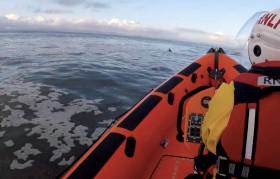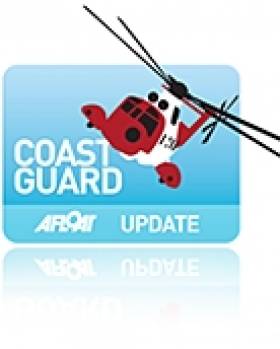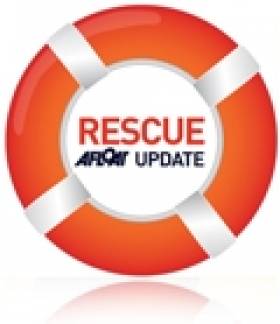Displaying items by tag: Ballybunion
Bundoran Lifeboat Helps Surfer Safely To Shore
#Lifeboats - Bundoran’s RNLI crew assisted a surfer safely to shore on Saturday afternoon (10 November).
The volunteers launched after a member of the public raised the alarm, having spotted someone they thought to be in difficulty and waving their arm off Rougey Point in Bundoran.
The Irish Coast Guard requested the inshore lifeboat to launch at 3.28pm and 10 minutes later the lifeboat, helmed by Killian O’Kelly, was at sea.
Weather conditions at the time were blowing a light south-easterly wind and there was a three-metre swell.
Once on scene, the lifeboat crew observed that the surfer, while not in difficulty or in any immediate danger, was in a challenging part of the sea and some distance away from the shore.
The crew made the decision to take the teenager onboard and transport him safely back to Bundoran Lifeboat Station.
Speaking following the callout, O’Kelly said: “We would like to commend the member of the public who raised the alarm this afternoon — that is always the right thing to do if you see someone you think or know to be in difficulty.
“While this surfer was not in any immediate danger, he was some distance from shore so we made a call to assist him safely back to shore.”
Elsewhere, a person who went missing while kitesurfing off Ballybunion in Co Clare yesterday evening (Sunday 11 November) was found on land several hours later, as RTÉ News reports.
The kitesurfer, who had come ashore at Kilkee, was said to be suffering the effects of cold after spending as much as two-and-a-half hours at sea and was taken to hospital.
Missing Man's Body Found Off Kerry Coast
#Coastguard - The Irish Times reports that the body of a man who was reported missing off Ballybunion on Co Kerry at the weekend has been found this afternoon (31 December).
The remains of the 64-year-old were recovered by the Irish Coast Guard after being spotted from the air by the Shannon-based rescue helicopter.
Angling and Marine Show a First for Ballybunion
#ANGLING - Top angling photographer and TV presenter Harry Gibney will be among the guests at the first Ballybunion Angling and Marine Show from 23-25 March.
According to The Kerryman, the show is the brainchild of local angler Mike Enright who has planned a mixture of competition and presentations from some of Europe's best known angling experts in the Co Kerry seaside town.
Among the events, Gibney will be sharing some of his top photography tips, while former long-distance fly champion Glenda Powell will present a fly fishing workshop. Other special guests include five-time world fly tying champion Gavin Hughes and celebrity chef Bryce Collins.
But the focus of the weekend is definitely on angling, with the Brian Martin Memrorial Cup set to be decided.
"Kerry has some of the finest angling facilities in the country yet it has never been promoted so we're hoping to change that," said Enright.
The Kerryman has more on the story HERE.
25 Years of Saving Lives in Ballybunion
Ballybunion's Sea and Cliff Rescue Service celebrated its 25th anniversary with an open day at its headquarters last weekend, The Kerryman reports.
The day also saw the unveiling of a special plaque from Water Safety Ireland recognising the rescuers' service to the locality.
The volunteer rescue unit was founded in 1986 by just three men: Mike Flahive, Frank O'Connor and TJ McCarron.
"It's the support of the public that's our bottom line and we're delighted with the continuing generosity of the people of North Kerry and West Limerick," said John Walsh, a member of the unit for 24 years.
"Without it we simply wouldn't be here today."
The Kerryman has more on the story HERE.

































































